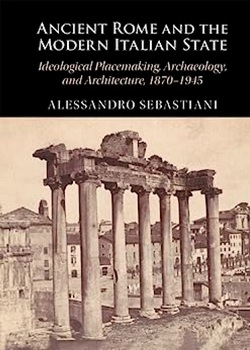
Название: Ancient Rome and the Modern Italian State: Ideological Placemaking, Archaeology, and Architecture, 1870–1945
Автор: Alessandro Sebastiani
Издательство: Cambridge University Press
Год: 2023
Страниц: 305
Язык: English
Формат: True PDF
Размер: 15 MB
In this book, examines how architecture and urbanism can be used to construct national identity. Using Rome as his case study, he explores how the city was transformed to accommodate different political ideologies in the period from 1870 to the end of World War II. After unification, Rome's classical architecture served as a reference point, guiding transformations of the urban fabric that met contemporary needs but also supported the agenda of the newly-formed Italian state. The advent of fascist state in the 1920s ushered in a different order of ideological placemaking. The monuments of ancient Roman were isolated in order to enhance their structural elegance, a scheme that powerfully conveyed political messages in support of Mussolini's regime. Sebastiani's volume offers a new approach to understanding the sophisticated relationships between archeology, urban planning, and politics within the city of Rome. Moreover, it highlights the consequences of suppressing historical evidence from monuments and archaeological sites.








